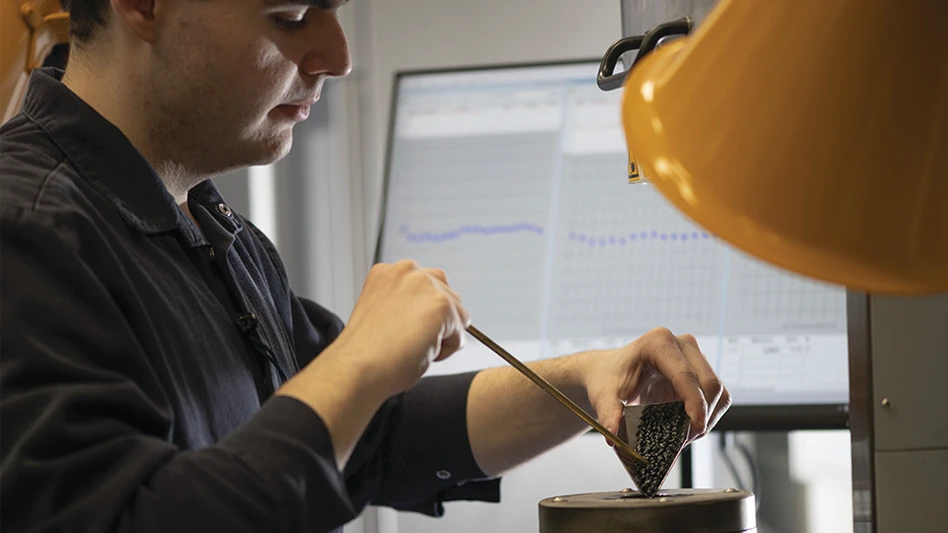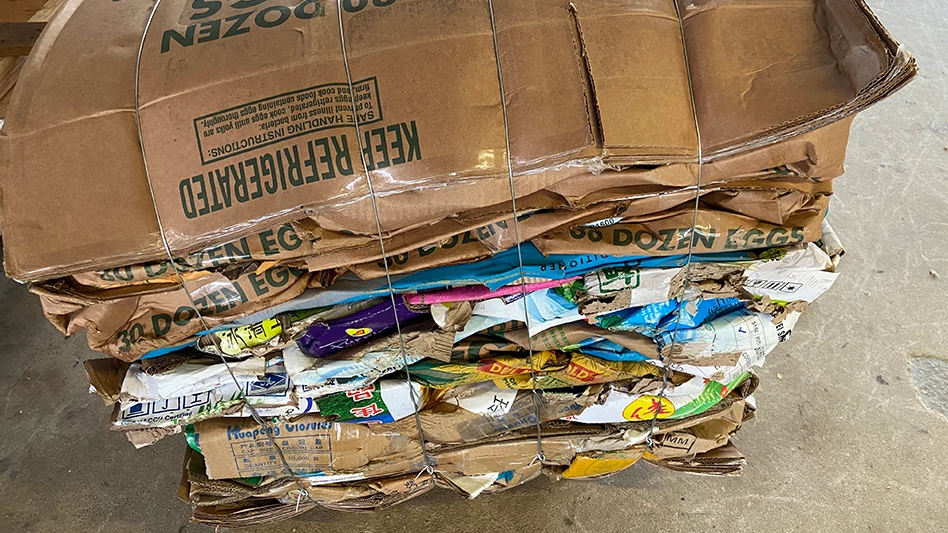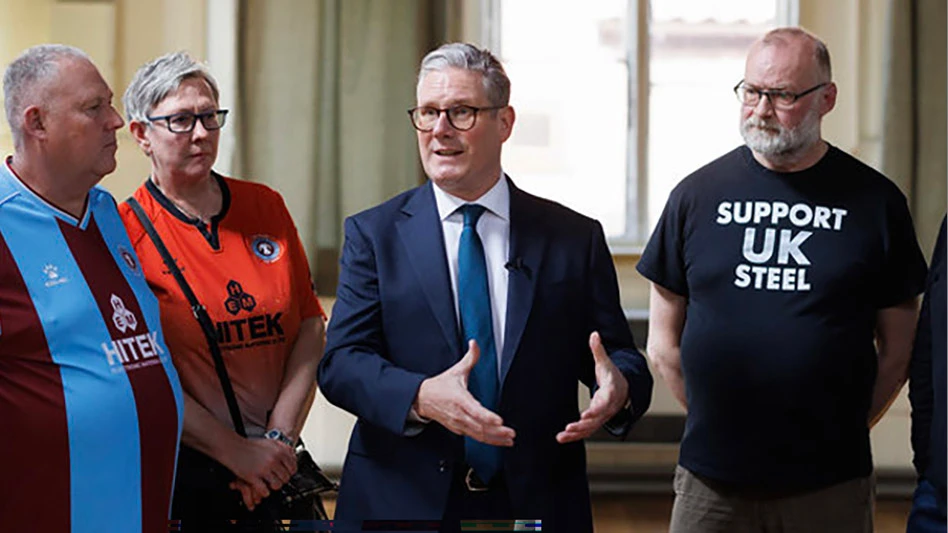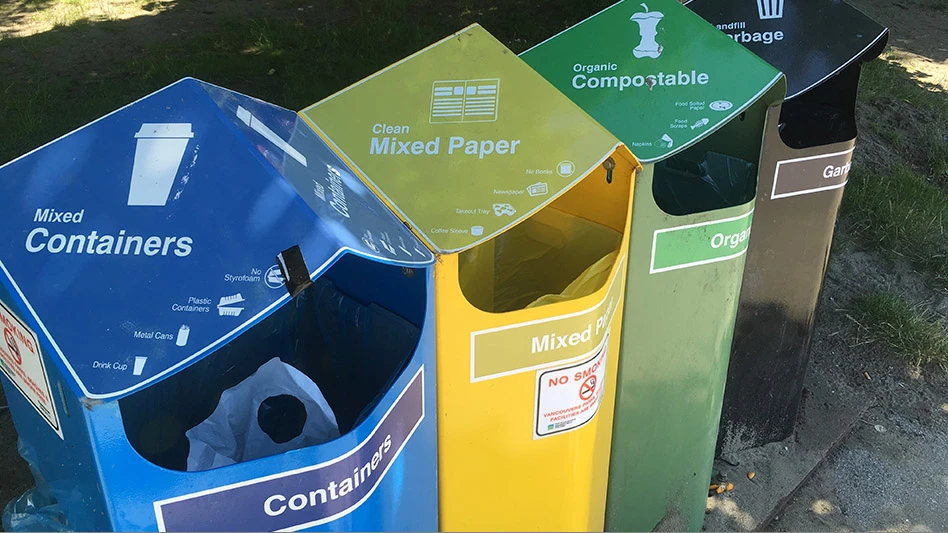A recent study by researchers at Carnegie Mellon University (CMU), Pittsburgh, estimates that by the year 2005 more than 45 million personal computers will become obsolete worldwide every year. In total, from 1990 to 2005, the CMU study indicates that nearly 300 million computers will have reached the end of their lives.
The prospect of these additional discards into waste streams poses a considerable problem for public and private sector waste management specialists. But for scrap and recycling professionals this field represents tremendous opportunity¡ªespecially in light of the strong push from the high technology industry to embrace principles of Design for the Environment (DfE) as developed by the Institute of Scrap Recycling Industries Inc. (ISRI), Washington.
Decreasing Profits for Chip Pullers and Precious Metal Refiners
Just five years ago the precious metals content of a standard PC printed circuit board was high enough to make for a highly profitable electronics scrap enterprise. Depending on the type of board, platinum, palladium, gold and silver could be extracted in enough quantity to make even small-scale computer circuit board recycling lucrative.
PC industry manufacturing changes over the last decade have gradually reduced the use of precious metals in printed circuit boards. In many cases, the computer industry has reduced use of precious metals by over 90%. This is one reason that state of the art Pentium and PowerPC machines can now be found for less than $1000¡ªa fraction of the cost of their earlier cousins.
Additionally, astute scrap managers and asset recovery specialists were able to expand recycling efforts into the field of memory chip recovery several years ago, when, for instance, the price of a used four-megabyte SIMM ranged from $8 to $14. Changes in the global chip market have been considerable since 1995. The same chip now sells for as low as 50 cents¡ªagain, a decrease in recovered value approaching 90%. In addition, advances in chip technologies mean that tasks once requiring 50 silicon wafer can now be done with one chip.
Simultaneously, many of the companies looking to manage profitable computer and other electronics scrap operations have run into the issue of waste disposal for residue from their scrap operations. Batteries and cathode ray tube (CRT) monitors are considered hazardous or universal wastes in many states. And much of the non-valuable portion of computers¡ªsolder-coated fiberglass boards, broken components such as drives, power supplies, and cooling equipment¡ªcan be very expensive to process for recycling or dispose in standard municipal solid waste landfills. Obviously, these added disposal costs decrease the profitability of computer recycling.
Diversification
So, while a number of firms have virtually dropped out of the computer recycling game, those determined to find a place in this niche market have expanded their operations to focus on a more diversified range of recovery options, including computer refurbishing and systems expansion, office and equipment liquidation, spare parts salvaging, mobile circuit board shredding for original equipment manufacturers (OEMs), and data storage system testing and reformatting.
Chris Altobell, a procurement officer of United Datatech (UDT), San Jose, Calif., notes that five years ago the bulk of his company's revenue came from ¡°chip pulling,¡± but now that's been cut in half. ¡°We're working twice as hard for half as much.¡± He points out that his company still handles the same volume of chips that they did back in the early 1990s but that overcapacity in the chip industry continues to erode prices.
To combat this market shift his company has diversified to include other services such as refurbishing computer peripherals such as monitors, modems and various types of drives. They've even evaluated the idea of creating a mobile shredding unit for the destruction of proprietary circuitry boards. Altobell also says that they have focused on increased efficiency in their chip pulling operation.
Micro Metallics Corporation, San Jose, Calif., long a recycler of integrated circuits (ICs), has seen the market shift toward the recovery of metals from printed circuit boards (an amalgam of ICs, transistors, resistors, chips, etc.) over the last 10 years. Vice president of sales Charles Beckman notes that they've had to work hard to increase both the efficiency of their operation and the volume of materials they handle.
A subsidiary of the Noranda Corporation, Toronto, Micro Metallics Corporation focuses on the recovery of copper from printed circuit boards. The main service they provide is the destruction of proprietary circuitry for such companies as Philips, Motorola, and Texas Instruments. Beckman says that the precious metals side of the game represents a sideline in that they are recovered as contaminants in the copper refining process. ¡°About 40% of the material we recover is precious metals while the rest is copper,¡± he says.
But with the price of gold and copper relatively low, Beckman, like UDT's Altobell, notes that his company has been working hard to diversify services. One way they've done this is to establish a partnership with Hewlett-Packard in the capture of reusable parts and the recycling of material that cannot be reused. Beckman says that this service is deemed important by H-P for practical and environmental reasons. Micro Metallics has also invested heavily in educating customers that the value of recovered material is often lower than the cost to process and refine it. He points out that sometimes they need to charge customers for the scrap they accept. ¡°We process and test material, determine its market value, deduct our costs and then give back the difference,¡± says Beckman.
Handy & Harman Refining Group Inc., Windsor, Conn., a world leader in precious metals refining for over a century, is also becoming a dominant player in the scrap electronics game. While company officials admit that there is a need to process a higher volume of boards in order to recovery the same amount of metal they did a decade ago, they feel that electronic equipment is still a great source of gold. Steve Foulk, marketing executive, points out that, ¡°You can typically recover more gold from electronic scrap than what comes out of the ground.¡± He notes that one challenge to Handy & Harman is dealing with the hazardous material found in electronics.
Handy & Harman has seven refineries around the world. They've been handling electronics in one form or another for nearly 40 years, and in the last four years the company has expanded services to include integrated circuit board refining and integrated circuit asset management.
Demanufacturing
Taking diversification to its logical conclusion, a number of companies are pioneering a new approach to electronics scrap recovery and recycling called demanufacturing. While already highly successful in the auto industry, demanufacturing in the field of electronics is gaining attention both in Europe and North America as the most logical way to handle complex, multi-material, obsolete electronics¡ªespecially in light of the growing importance of Design for the Environment strategies by industry. However, the complexity and diversity of electronic products requiring attention by this burgeoning field still makes its economic viability a challenge.
For electronics demanufacturing, there are at least three major companies on the east coast that accept multiple types of electronics for disassembly, refurbishment, repair, and recycling.
Advanced Recovery
Located in Belleville, New Jersey, Advanced Recovery has been processing and recycling electronics since 1991. Company president Eric Buechel says they handle over five million pounds of computers and other electronic products annually. With 14 employees, Advanced is small in comparison to some of their counterparts, but Buechel prides himself on the company's low turnover rate. ¡°Once we got up and running, our employees saw that we were driven as much by environmental commitment as we were profits.¡±
As a demanufacturing company, Advanced has diversified operations that include:
¡ñ Computer system refurbishment
¡ñ Computer repair
¡ñ Spare parts recovery
¡ñ Chip brokering.
On the recycling side of the equation, Advanced now processes over 600,000 pounds of material a month. Materials handled include:
¡ñ CRT disassembly: 20,000 lbs.
¡ñ Circuit board processing: 30,000 lbs.
¡ñ Mixed computer scrap chopping and baling: 570,000 lbs.
Advanced started out as a small computer refurbishing and repair business that quickly expanded to include chip pulling. Buechel reports that in one week he recently processed and shipped 50,000 used chips. Half of the chips were worth 23 cents apiece. The others were worth 55 cents. He notes that on the brokering side of his business he receives over 300 phone calls a day and 400 faxes from companies looking to buy or sell everything from used memory chips to modems and power supplies.
On the refurbishment end of the business, Advanced has six lab technicians who test and evaluate used computers and peripherals in the company's new mini-laboratory.
The biggest problem for electronics recovery firms, says Buechel, is the need for better education by the public sector. He feels strongly that the infrastructure for handling obsolete electronics is developing adequately, but that government has yet to fully commit to educating consumers and enforcing environmental regulations on the disposal side of the equation.
EPAinc.
Colt Recovery Group, East Haven, Conn., recently purchased Electronics Processing Associates Inc. (EPAinc.). With facilities in Massachusetts and New Jersey, the company has the capacity to process well over one million pounds of electronics a month.
Several years ago, New Jersey Department of Environmental Protection officials documented high concentrations of lead, cadmium and mercury in fly and bottom ash for a number of the state's incinerators. With consumer and business battery recovery programs in full swing, officials concluded that these heavy metals originated primarily from electronic equipment in their disposal streams¡ªcomputers, monitors and TVs in particular.
To combat this problem, EPAinc. was tapped to set up and manage a county-wide electronics processing facility in Union County that would service over 20 local municipalities. Municipalities are expected to establish their own electronics collection programs and then deliver material to EPAinc. Towns are charged a fee per item delivered. For example, the charge per large TV is $9.50, the charge for smaller TVs (under 22 inches) is $7.00, the charge for computers is $1.00 and the charge for monitors is $5.75. Steve Stanaback, the facility's general manager, points out that these charges are intended to cover nominal operating costs but that the facility depends on revenues from materials sales to be truly profitable.
With just four employees, the 7,200 square foot facility is relatively small. About 20% of the material they handle comes from post-consumer sources. The other 80% comes from asset management services they provide for OEMs and other manufacturers around the country.
Disassembly work stations are located in one corner of the warehouse space. Stanaback says that the use of quality hydraulic hand tools allows technicians to process about 20 computers an hour, meaning that one worker should be capable of dismantling about 150 computers a day, separating plastics, circuit boards, disk drives, power supplies, etc. into various Gaylords staged nearby. Circuit boards are also carefully monitored for the most valuable processors, which are usually pulled and sold for reuse.
One of the most difficult materials to handle is plastics, says Stanaback. He quotes an industry study he saw recently that identified more than 200 types of plastic in use by the computer industry. He notes that with DfE efforts some of the more progressive OEMs have reduced this number to nine or ten over the last few years.
Envirocycle Inc.
With facilities located in Ohio, North Carolina, and Pennsylvania, Enviro-cycle, Hallstead, Pa., is considered a national leader in electronics recycling and demanufacturing¡ªespecially in the field of CRT recycling. A division of the MATCO Group Inc. of Vestal, N.Y., Envirocycle opened for business in 1990 as a response by the parent company to a request for help from a major computer manufacturer who wanted to solve the CRT disposal dilemma. In 1991, Envirocycle initiated a special process for black and white CRTs, producing roughly 120,000 pounds of glass cullet. Recognizing that they had a great deal of experimentation and original design work to do, the company's first profitable year came in 1997 with sales in excess of $6 million. Projections for 1998 are that the company will handle 40 million pounds of cullet and achieve revenues in excess of $10 million. Part of this significant increase comes from the expansion of services to include an asset management and equipment refurbishing team and the opening of a new facility in North Carolina.
The company is developing a new enclosed wet saw technology that is the third generation in their strategy to create a method of separating the various glass chemistries that are incorporated into CRTs. Envirocycle plans to lease this technology in the near future.
Other Innovators
Andela Tool and Machine, Inc., long a maker of glass pulverizing machinery, has recently converted their equipment into a new offering. The Andela CRT Recycling System houses steel and glass separation systems along with their glass pulverizer in a 40-foot container complete with a dust control filtering system. The system is designed to handle a throughput of up to 10,000 pounds an hour. This product is available at a cost of roughly $170,000 depending on options and creates a sand-like lead silica product ready for market. The company says they can assist customers in finding markets on a brokering basis.
Finally, a small firm in southern New Jersey called Rustec, Inc. is completing experiments on a special conversion of Russian military technology to peace time purposes as part of a national federal program called Initiatives for Proliferation Prevention (IPP). Located on the sprawling grounds of Camden Iron & Metal, Rustec recently moved its first venture onto a commercial scale using specially purchased Russian metal crushers that grind recovered tungsten carbide into powder form. A second technology system still under development grinds printed circuit boards and then uses an electric pulse process and magnets to separate metal and nonmetal particles. Test results indicate that the process is efficient enough to produce material that can go directly to a primary refiner. Company engineers report that the precious metal yield from printed circuit boards can be as high as 10 ounces per ton. The recovered nonmetallic material is used as a bonding agent for cinder blocks.
Rustec plans to begin commercial operation of their circuit board recycling systems within the year. The technology is patent pending and they are considering the possibility of licensing their equipment to third parties.
New equipment offerings should mean that scrap and recycling firms, as well as manufacturers, have an opportunity to set up new modular electronics processing operations without having to climb too far on the learning curve. With Microsoft poised to launch its new Windows '98 and government planners gaining more awareness about the environmental impact of electronics disposal, it is clear that the field of electronic scrap recycling will continue to grow for sometime. RT
David Biddle writes on energy, recycling and the environment from Philadelphia. He can be reached online by e-mailing jango@aol.com .

Explore the June 1998 Issue
Check out more from this issue and find your next story to read.
Latest from Recycling Today
- Acerinox names new North American Stainless CEO
- Greenwave closes 2024 books with red ink
- Steel Dynamics nets $217M on record shipments
- Massive Chinese steelmaking rebound recorded in March
- LME looks into sustainable metal pricing
- OnePlanet Solar Recycling closes $7M seed financing round
- AMCS launches AMCS Platform Spring 2025 update
- Cyclic Materials to build rare earth recycling facility in Mesa, Arizona





